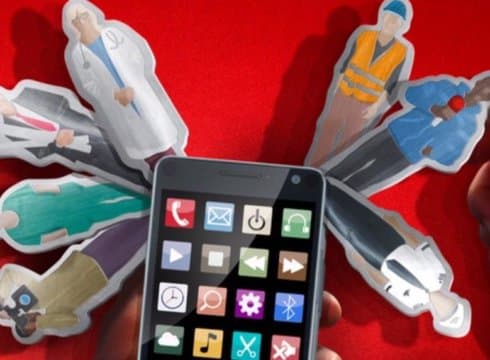Inc42 Daily Brief
Stay Ahead With Daily News & Analysis on India’s Tech & Startup Economy
What we are seeing today is a shift in consumer behaviour which, in turn, is driving the on-demand economy. Consumers want a quality product or service, conveniently, quickly and they hold companies to high standards to deliver this outcome. Consumer preferences have moved from desktop to mobile and impatience to hyper-impatience. The only reason why companies are able to keep up with these increasing demands is technology and connectivity that was previously never available.
What is the On Demand Economy?
Essentially, the on-demand economy is simply bringing together the power of technology with freelance workers/companies to provide goods and services. This ultimately gives consumers the convenience which was never previously available. Today, there are many on-demand companies which provide their customers with high-end pick-up services like Instacart, which keeps your refrigerator constantly stocked, or Seamless, which delivers restaurant meals to your door. These companies prove that the on-demand economy has tremendous growth potential. According to Business Insider, over $4.8 billion in capital has been invested in this segment, with $2.2 billion invested in the last 12 months alone. This investment level as well as improving technology and changing social habits will be the driving forces behind the continuous growth going forward.
The Key Driving Forces of the On Demand Economy
1. Social Acceptance
The on-demand economy has not only been socially accepted, but has now become the standard of living. We characterise new entrants as the Uber for X or the Airbnb for X. These companies have permeated social barriers and have been integral in laying the on-demand foundation.
The reason consumers have been so accepting is that they see value in cost, quality, convenience and speed. Two parties are able to exchange goods or services directly with each other, eliminating prior layers in-between. This ultimately makes any exchange more efficient and cost effective as each party is able to deal with the source.
For example, the first time I used a cab booking app, I knew it was more convenient than me chasing down a cab, quicker, more cost effective and the quality was much higher. I was completely sold. Though this is only an instance in one sub-category; this is encouraging because of the vast number of goods and services that exist in other categories. Ultimately, this is only the beginning.
2. Technology
How can you consistently deliver a high quality product instantaneously and conveniently? The answer is that you empower the customer to make their purchasing decision and the business utilizes technology as a medium for execution.
I have previously found that one of the hardest aspects of doing business is to convince a customer to make a purchasing decision. In the on-demand economy, the purchasing aspect has already been decided by the customer and is evidenced by him / her accessing his phone / platform to execute his decision. The technology layer now simply becomes the tracking and logistical vehicle to execute the customers decision.
As technology and connectivity continues to improve, this will drive value to both the customer and the business by enhancing the customer experience.
The Future of the On Demand Economy
The way I view the current on-demand economy and the uberification of all goods and services is by splitting the economy in two distinct areas, the consumer driven segment (i.e. car services, food services etc.) and the business driven segment (i.e. professional services). The consumer segment has already proven the massive value it generates for its users and has already integrated itself into our standard of living. We now order food, book cars and rent our house all through our mobile phones and the times when we lived without these services are a distant past. Though what I see for the on-demand business economy is a segment that has not reached its prime and has substantial room to improve.
What we see today are a few headline companies in the business on-demand economy such as oDesk, Elance and Freelancer for professional services. Each delivers a solution that is quick and convenient. However, you will find that the quality varies in each instance as services are fulfilled through a marketplace of freelancers and companies. What is lacking is a level of checks and balances that can sit between both parties to ensure consistent high quality. This will be an area of improvement for new entrants and existing players as they focus on how to deliver standardised quality products.
Separately, we also see growth areas that have been relatively un-tapped in the on-demand economy, such as front office professional services, namely research & analysis. I believe that a range of services in the field of finance, marketing and analytics would soon be identified as the areas that would be extremely useful for companies and would drive massive value.
The on demand startup trend seems to be going in the right direction as more and more startups are popping up. Ultimately the consumer would benefit the most with standardized prices, services and experience, all just a tap away.
{{#name}}{{name}}{{/name}}{{^name}}-{{/name}}
{{#description}}{{description}}...{{/description}}{{^description}}-{{/description}}
Note: We at Inc42 take our ethics very seriously. More information about it can be found here.


